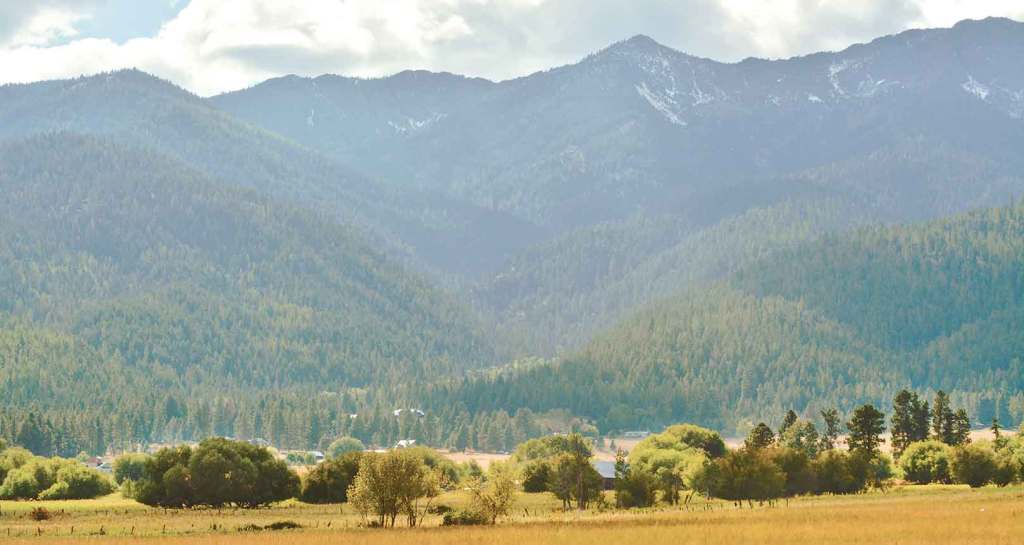Worried About The Watershed
Published 7:30 am Thursday, September 28, 2017

- Worried About The Watershed
When Arvid Andersen remembers watching the Cornet/Windy Ridge fire race through miles of drought-stricken Baker County forest in August 2015, he also thinks of a much smaller, but more vital, patch of land.
Baker City’s watershed.
This 10,000-acre section of the Wallowa-Whitman National Forest, on the east slopes of the Elkhorn Mountains about 10 miles west of town, has supplied almost all the drinking water for the city’s nearly 10,000 residents for more than a century.
But Andersen, who has been a city councilor since January, is worried about the watershed’s future.
Specifically, he fears that a wildfire will blacken a large part of the watershed, something that hasn’t happened for more than 100 years but which is probably decades overdue, based on a study of fire scars on old trees in the watershed conducted by researchers from the University of Washington in the mid-1990s.
Such a blaze could foul the watershed’s streams with ash and, after the first post-fire rainstorm, with torrents of mud.
If that happened, Andersen worries, the city probably would have two major problems — finding an alternate source of water for immediate needs and building a water filtration plant that could cost $15 million or more.
It’s that potential crisis that has prompted Andersen to make the watershed his top priority as one of the city’s seven elected representatives.
“We can’t keep kicking the can down the road,” Andersen said. “It’s just a matter of time. It’s just dumb luck that it hasn’t burned yet.”
Andersen has a professional interest in this topic as well.
He’s a longtime forestry consultant who works with private property owners around the region to manage their forests.
Andersen said he’s motivated in part by his own experiences helping his clients reduce the risk of wildfire in their forests.
He cites in particular a piece of ground near the Dooley Mountain Highway south of Baker City. Andersen said the Cornet/Windy Ridge fire burned through the area, but it stayed on the ground, rather than burning the crowns of trees, when it reached the private property where he had worked.
Andersen believes the Forest Service could accomplish the same thing in parts of the watershed.
To that end, he, along with City Manager Fred Warner Jr., met recently with Jeff Tomac, ranger for the Forest Service’s Whitman District, which includes the watershed.
Tomac said he agrees with Andersen that the watershed, because of its importance to Baker City, should be a priority.
“I have placed a higher value on that watershed,” Tomac said. “There’s no doubt there are things we can do there.”
What those things might be is uncertain.
Tomac said it might be relatively easy, and inexpensive, to cut some trees in narrow corridors along three roads — the Pipeline Road, under which one of the city’s main water supply pipes is buried, and the Goodrich Lake and Marble Creek Pass roads.
The Pipeline Road forms the eastern boundary of the watershed. The other two roads run through the watershed, generally east-west.
The idea, Tomac said, is to create “fuelbreaks” — areas where the trees are far enough apart that a fire might drop to the ground and become easier for fire crews to put out.
This would constitute a continuation of the work the Forest Service, with the city’s backing, did mainly around the fringes of the watershed in the late 1990s and early 2000s.
The Forest Service spent more than $2.2 million over several years to create fuelbreaks, focusing on the south end of the watershed near Elk Creek, and on some south-facing slopes around Salmon, Marble and Mill creeks.
Andersen endorses the projects that Tomac mentioned, but he doesn’t believe they are sufficient.
He contends the most crucial task is to reduce the amount of fuel, both standing trees and logs and limbs on the ground, inside the watershed’s perimeter.
Andersen says those fuel loads are much higher than they were before the watershed was created. Two factors have contributed to that — little or no logging in the area, and the aggressive firefighting tactics of the Forest Service that have all but excluded the fires that in past centuries burned parts of the watershed at least every decade or so.
Steve Hawkins, deputy fire staff fuels program manager for the Wallowa-Whitman National Forest, said he and other Forest Service officials saw the effects of the exclusion of fire when they were working on fuelbreaks in the watershed about 15 years ago.
Hawkins said forests on south-facing slopes in the lower elevations of the watershed, which historically were dominated by ponderosa pine trees that prefer these drier, hotter areas, also had large numbers of Douglas-fir and grand fir trees. These species probably were killed by the relatively frequent, but generally low-intensity fires of the past, he said. But with fire mostly banished from the watershed over the past century, the fire-prone firs had encroached on previously pine-dominated areas, Hawkins said.
Crews cut some of those firs to create the fuelbreaks.
A fiery history
Emily Heyerdahl and James Agee of the University of Washington studied the fire history of the watershed in the 1990s by looking at fire scars on trees and taking core samples of trees.
In their 1996 report, the researchers wrote that in the drier forests of the watershed — including the south-facing slopes that Hawkins mentioned — fires burned about every 11 years dating back to about 1646.
See more in the Sept. 27, 2017, issue of the Baker City Herald.





